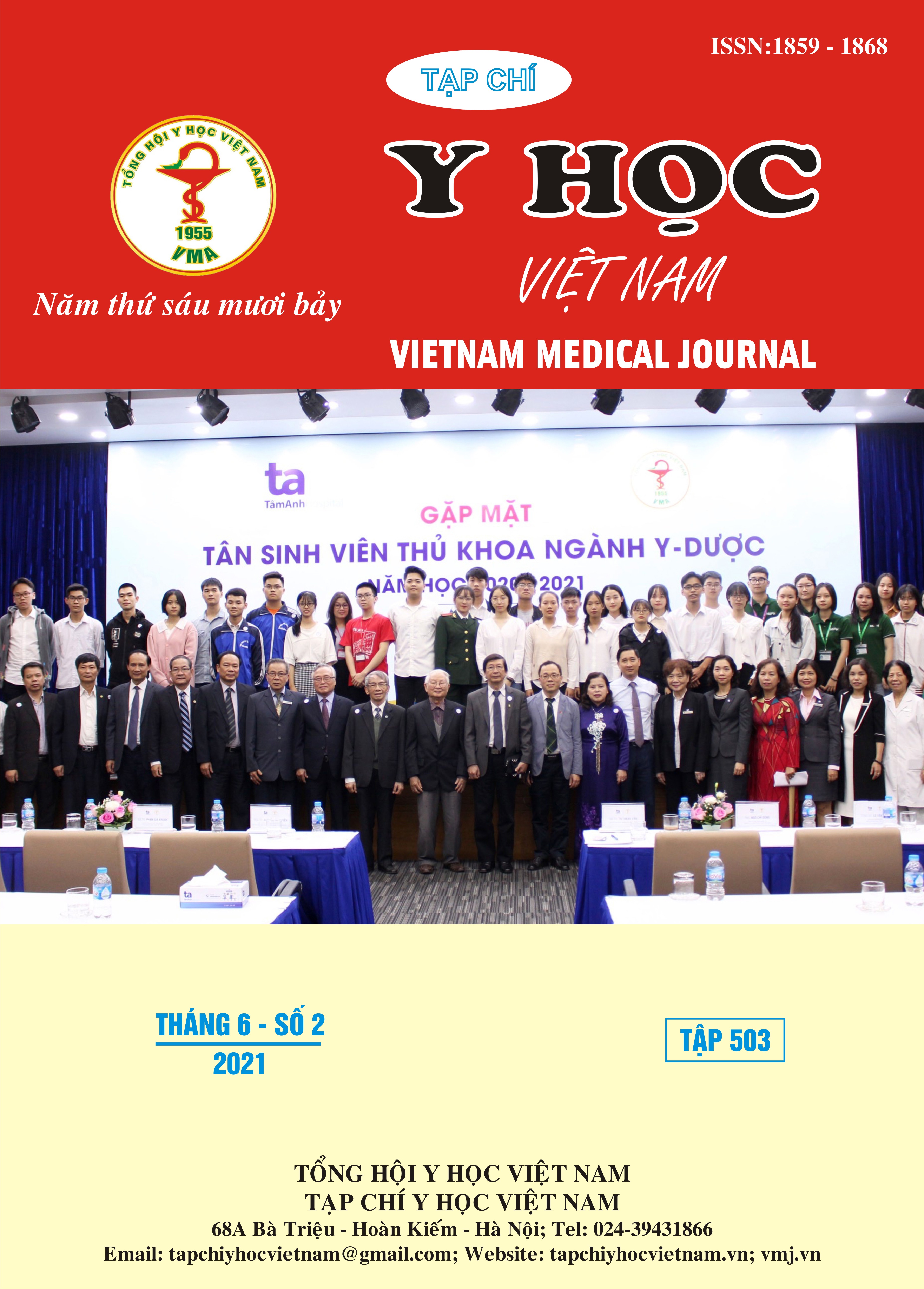APPROACH TO DETERMINING POLYMOPHISM IN PATIENTS WITH FAMILIAL HYPERCHOLESTEROLEMIA
Main Article Content
Abstract
Familial hypercholesterolemia (FH) is an autosomal dominant disorder of lipoprotein metabolism characterized by high levels of LDL-cholesterol (LDL-C) in the blood. The mutation that occurs primarily in: LDLR, apoB, PCSK9, LDLRAP1 genes, 80% of which detected the LDLR gene mutation. However, many studies have demonstrated that polymorphisms are factors that also contribute to raising lipid in patients with FH, which is also one of the most overlooked factors. The study performed on 26 patients diagnosed with FHshowed that SNP rs1003723 with the rate of 7/26 (26.92%); SNP rs5925 appeared in 11/26 pediatric patients (42.31%). 6/26 pediatric patients (23.08%) had the presence of heterozygous SNP rs1003723 and/or SNP rs5925 but no mutations were found. Remaining 13/26 FH pediatric patients (50%) did not detect any both mutation and SNPs in some hotspot exons inLDLR gene. In the group that did not detect the mutation, the patients with SNPs had statistically significant higher TC than those without SNPs (p=0,005). Identifying SNPs in patients with FH and their families is a very important step and one of the evidence that helps clinicians intervene in early treatment, follow-up and anticipation, preventing cardiovascular risk complications from early occurring.
Article Details
Keywords
Familial hypercholesterolaemia, LDLR SNPs
References
2. DeMott K., Nherera L., Shaw EJ., et al. Clinical Guidelines and Evidence Review for Familial hypercholesterolaemia: the identification and management of adults and children with familial hypercholesterolaemia. London: National Collaborating Centre for Primary Care and Royal College of General Practitioners.
3. Futema M, Bourbon M, Williams M, et al. Clinical utility of the polygenic LDL-C SNP score in familial hypercholesterolemia. Atherosclerosis. Oct 2018;277:457-463.
4. Talmud P.J, Shah S, Whittall R, et al. Use of low-density lipoprotein cholesterol gene score to distinguish patients with polygenic and monogenic familial hypercholesterolaemia: a case-control study. Lancet. 2013;381(9874):1293-1301.
5. Hoàng Thị Yến., Vũ Đức Anh., Đặng Thị Ngọc Dung., et al. Xác định đột biến trên một số exon trọng điểm gen LDLR ở bệnh nhân tăng cholesterol máu có tính chất gia đình Tạp chí Y học Việt Nam. 2019;01(484):35-39.
6. Webb J.C, Patel D.D, Shoulders C.C, et al. Genetic variation at a splicing branch point in intron 9 of the low density lipoprotein (LDL)-receptor gene: a rare mutation that disrupts mRNA splicing in a patient with familial hypercholesterolaemia and a common polymorphism. Human molecular genetics. Sep 1996;5(9):1325-1331.
7. Andreotti G, Menashe I, Chen J, et al. Genetic determinants of serum lipid levels in Chinese subjects: a population-based study in Shanghai. China. Eur J Epidemiol. 2009;24 ((12):763-774.
8. Ríos-González B.E, Ibarra-Cortés B, Ramírez-López G, et al. Association of polymorphisms of genes involved in lipid metabolism with blood pressure and lipid values in mexican hypertensive individuals. Dis Markers. 2014;2014:150358.


